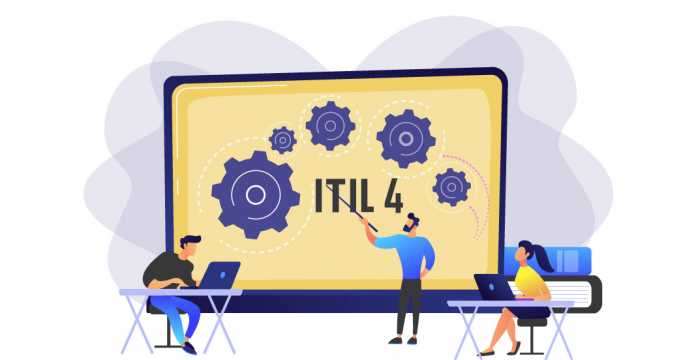
ITIL or Information Technology Infrastructure Library was developed to assist organizations with streamlining the IT department with the rest of the company. It takes a holistic approach to operations within a company and focuses on integrating IT with other departments in the company. To master how the framework is implemented, it is essential to be aware of ITIL concepts.
Introduction to ITIL framework
ITIL has evolved with the evolution in organizational requirements and capabilities as well as technological advancements. Processes need to be updated over time so that they can still benefit the organization and stay relevant. The latest version of ITIL was released in 2019, known as ITIL 4. This update has accommodated many changes that have been introduced in company operations, such as agility, automation, and more.
With over 2 million certified ITIL professionals, ITIL has gained popularity and recognition worldwide and become one of the most effective frameworks in the IT industry. According to a study conducted by Forbes, the framework is also used by more than 90% of the Fortune 500 companies.
The heavy adoption of digital means, on-cloud solutions, and the transition towards a more automated and digitally integrated environment are possible with the latest ITIL update. ITIL 4 offers solutions to ease the digital transformation processes for the organization. Service delivery of information technology has evolved, and there are new problems that ITIL solves with its easily implemented and customizable framework.
The primary focus of many organizations is to create value for the end-users and customers instead of just delivering products and services. This shift has created a more holistic approach to organizational processes where all departments and teams are integrated and work together to provide value to the stakeholders. ITIL 4 focuses on helping organizations achieve this transition seamlessly.
ITIL Concepts That are Critical for Individuals and Enterprises
There are certain key concepts that ITIL 4 addresses, which are:
- Focusing on products and services and maintaining service relationships
- Generating value for all stakeholders
- Creating an effective service delivery system
- Focusing on improving the service value chain
Let us explore each of these core ITIL concepts in detail.
Focusing on Products, Services, and Maintaining Service Relationship
A significant change that ITIL 4 addresses are how users define the value of a product or service they receive. Before, products and services were simply delivered, but that has changed over time. Now, the value cannot be delivered directly to the user. It has to be created using feedback from the customers.
This approach to co-creation and generation of value delivered by products and services in an organization is enabled with ITIL 4. Customer feedback is taken into consideration in the development process, and due to the rise in the iterative approach to development, it can easily be implemented with every iteration. Customers have become an essential part of product development and process creation today, and ITIL 4 gives developers and teams a flexible framework that can be easily adapted to suit the organization’s needs or the project.
Generating Value for all Stakeholders
ITIL 4 acknowledges that there are more stakeholders involved in a product or service than just the end-user and the organization providing the service or product. It can impact other organizations and industries as well, which automatically makes them stakeholders as well. ITIL 4 provides a framework for organizations where they can combine all the involved stakeholders, such as end-users, organizations, IT, and other partners and suppliers, and create something that can generate value for all of them. It helps improve the overall service management system in place in the company.
Creating an Effective Service Delivery System
Another core concept of ITIL 4 is the improvement in how the service value delivery system is managed. This service value system is managed in a way that creates the most value for all stakeholders involved. There are five main components of the same, which are:
- Following the guiding principles of ITIL, which now include resource optimization and automation
- Using governance as one of the factors involved in value creation
- Creating an effective service value chain, which will be discussed in detail as the next core concept of ITIL 4
- ITIL v3 was looked at as a framework for improving processes, whereas ITIL 4 is more inclusive. It includes improving processes and creating better practices for organizations to follow to improve their product or service delivery
- ITIL 4 takes the iterative approach to the delivery of value in services, which means it creates room for continuous improvement
Focusing on Improving the Service Value Chain
The final concept of ITIL 4 is creating a useful service value chain. This chain is made up of various activities, which have been broadly categorized as:
- Engagement activities with involved stakeholders
- Planning and creating a vision for the product or service
- Designing the actual product or service in a way that focuses on value creation
- Building the service in a way that is easily accessible by the end-users whenever required
- Continuous improvement of the service and its delivery
- Creating a network of support for the delivered product or service
This creates an effective service value chain where all components of the final service or product are linked so that they work together to give a successful result.
How are Organizations Transitioning From ITIL v3 to ITIL 4?
The biggest question that arises with ITIL 4 being released is: Will the ITIL v3 certification still be valid? The answer is yes. ITIL 4 includes all the main principles of ITIL v3. It has just evolved to make the certification a better fit for modern times. This is why it is recommended for all those who have completed their ITIL v3 certification to upskill themselves and gain the ITIL 4 foundation certification.
The main factor involved in implementing ITIL 4 in organizations is the shift to an iterative approach. If the companies are already working in an Agile manner and have implemented some iterative strategies to their operations, it can make the implementation of ITIL 4 a lot easier.
Final Thoughts
A certification in ITIL 4 helps both organizations and working professionals as individuals with their work. Working professionals can upskill themselves and learn about implementing ITIL in companies, opening up doors for advancement in their careers. Organizations that implement ITIL 4 will benefit by adapting to the global market’s shift and increasing their revenue.















